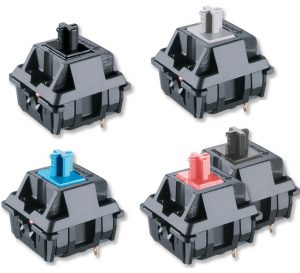Comprehending the Functionality of Membrane Layer Changes for Interface Instruments
The performance of membrane changes represents a significant advancement in interface style, combining efficiency with visual adaptability. These switches run through a multi-layered framework that equates customer interactions right into electrical signals, permitting both portable layouts and strength against environmental factors. As sectors increasingly focus on user experience, recognizing the nuances of membrane button innovation comes to be necessary. What implications do these improvements hold for future applications, and how might they redefine customer communications across numerous tools?
What Are Membrane Layer Switches?
Membrane buttons are cutting-edge user interface tools that facilitate customer interaction with electronic equipment. These versatile parts are composed of multiple layers, consisting of a visuals overlay, spacer, and a printed circuit layer. The design permits for a seamless combination right into different digital tools, improving both the aesthetic and useful elements of interface.
Membrane layer buttons are commonly utilized in a variety of applications, from household appliances to industrial machinery and clinical gadgets. Their construction generally features a slim account, making them an excellent selection for portable styles. The responsive feedback provided by these switches can be engineered to satisfy particular customer preferences, ensuring efficient interaction in between the customer and the device.
Sturdiness is an additional considerable benefit of membrane layer buttons, as they are immune to dust, dampness, and chemicals, which enhances their life-span popular atmospheres. Furthermore, these buttons can be tailored in regards to shape, dimension, and visuals style, permitting branding and user-specific attributes. Generally, membrane changes stand for a functional option for enhancing individual experience in electronic gadgets, combining performance with visual charm in a reliable way.
Just How Membrane Switches Over Job
Operating on a simple principle, membrane changes utilize a layered building to sign up user input successfully. Each button contains multiple layers, including a printed circuit layer, a spacer layer, and a top visuals layer, which are developed to collaborate effortlessly. When an individual presses the leading layer, it compresses the spacer layer, bringing the conductive elements of the circuit layer into call with each various other.
This get in touch with develops a closed circuit, signaling the tool to execute a particular feature. The style allows for various setups, including responsive responses, which can improve the individual experience by offering a physical feeling upon activation. The materials used in membrane layer buttons often consist of flexible substrates, such as polyester or polycarbonate, which ensure durability and durability against damage.

Trick Benefits of Membrane Layer Buttons

One more considerable advantage is their density. Membrane switches are slim and light-weight, which enables manufacturers to conserve area in news their gadgets without giving up performance. This feature is particularly valuable in applications where weight and volume are essential considerations.
Furthermore, membrane layer buttons are resistant to dust, wetness, and chemicals, improving their resilience. This resilience expands their lifespan and minimizes the demand for constant substitutes, causing price financial savings gradually.
Furthermore, the responsive responses supplied by membrane switches can be enhanced to improve customer interaction. They can include functions such as raised buttons or audible clicks, enhancing usability and customer experience.
Applications Throughout Industries
User user interface devices making use of membrane buttons are prevalent in a broad variety of sectors, showcasing their adaptability and capability. Membrane Switch. In the clinical market, membrane layer switches are indispensable to tools such as diagnostic tools and patient monitoring systems, where their toughness and ease of cleaning are important for preserving health standards. Similarly, in the auto market, these switches are utilized in control panel controls and infotainment systems, providing a smooth and contemporary user interface for customers.
In addition, the customer electronic devices industry take advantage of membrane layer buttons in home appliances and handheld devices, where compact design and straightforward interfaces improve user experience. Industrial applications likewise utilize membrane switches over for control panels in equipment and automation systems, emphasizing their effectiveness and resistance to rough atmospheres.
In the aerospace and protection sectors, membrane switches are utilized in cabin controls and tools, where integrity and efficiency under severe problems are paramount. In addition, the gaming market significantly integrates membrane layer switches in controllers and gallery machines, adding to an interesting user experience. Overall, the flexibility of membrane changes enables their extensive use throughout many fields, emphasizing their significance in contemporary interface style.
Future Patterns in Membrane Switch Over Technology

Furthermore, the use of sophisticated products, such as polycarbonate and polyester movies, is anticipated to increase, providing improved durability and resistance to ecological stressors. These materials add to the overall long life of membrane layer switches, making them ideal for harsher commercial applications.
Furthermore, the incorporation of smart modern technology, including IoT connectivity, will allow membrane switches to communicate with other Check Out Your URL gadgets and systems, facilitating a much more interactive customer experience. This fad straightens with the growing demand for wise tools across numerous industries, from medical care to consumer electronics.
Lastly, personalization alternatives are expected to increase, allowing suppliers to produce bespoke remedies tailored to details individual requirements and choices. These developments will place membrane buttons as crucial parts in the evolution of individual interface modern technology.
Verdict
In conclusion, membrane layer changes represent a pivotal innovation in customer interface modern technology, offering a dependable and flexible option for diverse digital applications. As improvements in product scientific research and touch picking up modern technologies continue, the functionality and applicability of membrane buttons are expected to increase, strengthening their significance in modern-day digital devices.